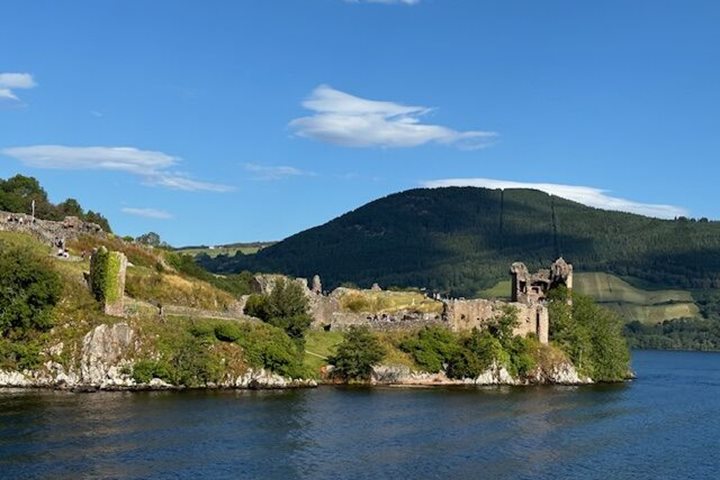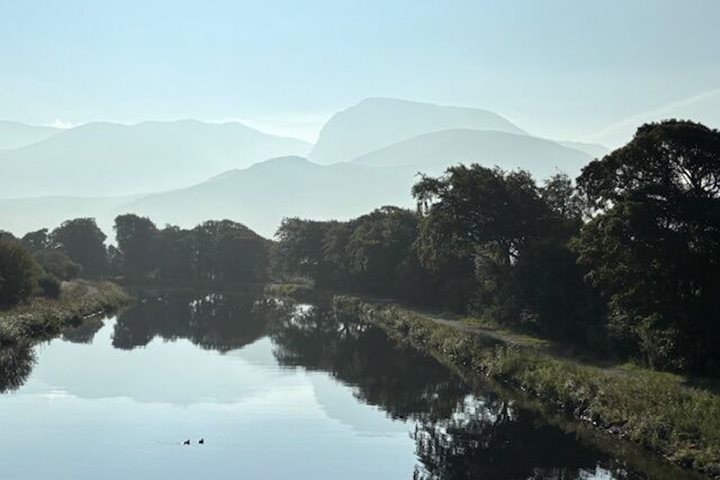Our expedition through the highlands and islands of Scotland may have found its apotheosis, its fullest and most complete expression, as we traveled today across the beautiful landscape of Mull and rode the ferry to the sacred island of Iona. Literally, “apotheosis” translates from Greek as “from God” – and in modern usage it carries the meaning of reaching a pinnacle of an experience or a process. It seems a perfect term for our journey through the glorious steep-shouldered hills and deep valleys of the Ross of Mull, on our way to the tiny island where St. Columba established the first important center of the Christian Church in the British Isles.
Mull, the second largest island in the Inner Hebrides, stretches out from the mainland in a knot of long peninsulas and deep sea-lochs. Away from its rocky coast its insular character fades and one has a strong feeling of entering the highlands, surrounded by grassy green mountains and never far from the roaring torrents that carve the narrow dells between them. As we crossed, our driver offered many stories about the landscape we were traveling through, the lives of the people who live here and the many species of wildlife that also call the island home, so that we felt that we came to know the place well along the way.
On reaching Fionnphort, on Mull’s southwestern tip, we boarded a small ferry for the short trip across the Sound of Iona and landed on the small rocky island that has become known as the Cradle of Christianity. A short walk up the lanes, past the walls of the ruined Nunnery, brought us to the beautiful medieval abbey, its clean stone rising from a broad expanse of meadow-green grass. Steve and Konia led us on a tour of the site, pointing out Celtic crosses that have stood there for over a thousand years, the soaring sanctuary where services have been held since the days of the saint, and the quiet cloister, where the gentle light entering the arched galleries from the courtyard is still able to convey a rare feeling of serenity that envelopes the visitor.
After tucking into the delicious and perhaps over-generous packed lunches that our galley had prepared for us, we returned across the sound and boarded our coach for the return journey across Mull. This time, just before arriving back at Craignure, we turned up a small lane and drove a short way to Duart Castle, the seat of Clan MacLean. The castle’s enthusiastic caretaker invited us in and eagerly showed us around the beautifully appointed rooms, happily showing off the many treasures displayed there and answering all our questions about the history of the castle and its current owners and occupants.
The island and its highlands, the narrow rocky chip of the big island where one of the worlds great religions grew to a new prominence, a castle where a great clan lived and died and lives again – it was a day full of the real spirit of Scotland.







